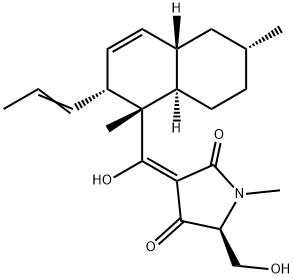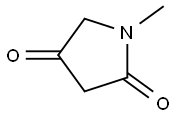Equisetin , 98% , 57749-43-6
| Pack Size | Price | Stock | Quantity |
| 1mg | RMB3712.00 | In Stock |
|
| others | Enquire |
PRODUCT Properties
| Melting point: | 117-118 °C |
| Boiling point: | 556.0±50.0 °C(Predicted) |
| Density | 1.180±0.06 g/cm3(Predicted) |
| storage temp. | Hygroscopic, -20°C Freezer, Under inert atmosphere |
| solubility | Acetone (Slightly), DMSO (Slightly), Methanol (Slightly) |
| form | Solid |
| pka | 4.50±1.00(Predicted) |
| color | Pale Beige to Light Brown |
| Stability: | Hygroscopic |
Description and Uses
Equisetin is a fungal metabolite that has been isolated from Fusarium. It inhibits HIV-1 integrase 3’ end-processing and strand transfer activities. Equisetin inhibits the ATPase activity of rat liver mitochondria and mitoplasts stimulated by 2,4-dinitrophenol (Dnp) in a concentration-dependent manner (IC50 = ~8 nM per mg of protein for both). It also inhibits ADP-stimulated respiration and the mitochondrial transport of ATP, inorganic phosphate, and succinate. Epiequisetin is phytotoxic and inhibits the germination of various seeds and growth of young seedlings.
The tetramic acid, equisetin, is produced by a number of species of Fusarium. Interest in equisetin emerged with reports of its inhibitory activity against HIV-1 integrase in vitro that was mechanistically distinct from previously described inhibitors. Equisetin inhibits 3' end-processing and strand transfer, as well as disintegration catalysed by either the full-length enzyme or the truncated integrase core.
Safety
| Symbol(GHS) |  GHS07 |
| Signal word | Warning |
| Hazard statements | H302 |
| Precautionary statements | P312-P260-P280 |
| HS Code | 29339900 |
| Toxicity | mouse,LD50,intraperitoneal,63mg/kg (63mg/kg),Antimicrobial Agents and Chemotherapy. Vol. 5, Pg. 634, 1974. |




